- Sorry, this product is unavailable.
-
 Illustrated with over 1300 photographs, some never previously published, this military journey begins with the build up to war and the invasion of Poland to ultimate victory over Japan. Immensely readable, it brings the events and the people of those turbulent times into sharp focus for those who lived through the conflict as well as those born during the fifty years that have elapsed since the war's end.
Illustrated with over 1300 photographs, some never previously published, this military journey begins with the build up to war and the invasion of Poland to ultimate victory over Japan. Immensely readable, it brings the events and the people of those turbulent times into sharp focus for those who lived through the conflict as well as those born during the fifty years that have elapsed since the war's end. -
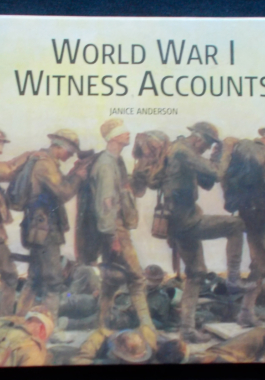 You can read history - or you can learn history from the people who lived it. This compilation of accounts of life during the First World War are from diaries and letters: from those at home, from the trenches, from men and women in the armed forces...there's even a section devoted to the modern machineries of war and what those on the front line thought of them. Here are the voices of that time and they are the ones who know what life was like then.
You can read history - or you can learn history from the people who lived it. This compilation of accounts of life during the First World War are from diaries and letters: from those at home, from the trenches, from men and women in the armed forces...there's even a section devoted to the modern machineries of war and what those on the front line thought of them. Here are the voices of that time and they are the ones who know what life was like then. -
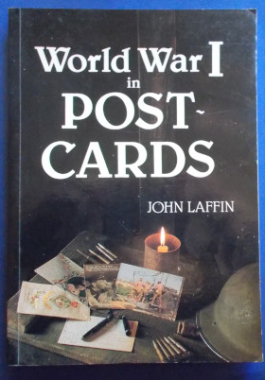 The extraordinary phenomenon of the war postcard - reflections of the full range of responses to the most murderous and ghastly of all wars. The chapters herein include: story postcards, military subjects, heroism and agony, religious themes, humour, animal and field postcards - even those embroidered with silk and very beautiful still today. Even propaganda is represented. Almost three hundred post cards are reproduced - individual historic documents of a bygone age. Photos in colour and black and white.
The extraordinary phenomenon of the war postcard - reflections of the full range of responses to the most murderous and ghastly of all wars. The chapters herein include: story postcards, military subjects, heroism and agony, religious themes, humour, animal and field postcards - even those embroidered with silk and very beautiful still today. Even propaganda is represented. Almost three hundred post cards are reproduced - individual historic documents of a bygone age. Photos in colour and black and white. -
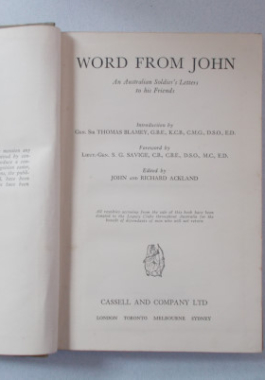
An Australian soldier's letters to his friends from World War II. When written, these letters did not mention place names other than those permitted by the censor. In order to make a continuous and intelligible narrative, these place names (now permitted) have been inserted. A rare glimpse from the war front.
-
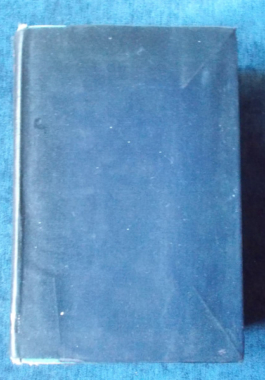
 Subtitle: A True Story Of Adventure From The Arctic To The Argonne. Described as the biography of a common soldier with thirty three years of service in the American Army, this 'uncommon' soldier distinguished himself in the Argonne in World War I and several other conflicts. Samuel Woodfill was regarded as being a true American frontiersman who seems to have had many and varied adventures, given such chapter headings as: I Was Born with a Gun in My Hands; A Surprise Attack and Escape Over A Precipice; Out of Company C Only Four Men Survived; The Tragedy of A Medicine Man; The Strange End of Sam Gowler and many others just as intriguing. Illustrated with black and white photographs.
Subtitle: A True Story Of Adventure From The Arctic To The Argonne. Described as the biography of a common soldier with thirty three years of service in the American Army, this 'uncommon' soldier distinguished himself in the Argonne in World War I and several other conflicts. Samuel Woodfill was regarded as being a true American frontiersman who seems to have had many and varied adventures, given such chapter headings as: I Was Born with a Gun in My Hands; A Surprise Attack and Escape Over A Precipice; Out of Company C Only Four Men Survived; The Tragedy of A Medicine Man; The Strange End of Sam Gowler and many others just as intriguing. Illustrated with black and white photographs. -
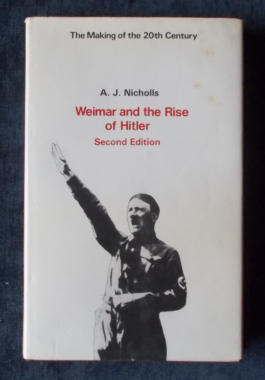 Regarded as the classic text on the Weimar Republic, Nicholls begins with Germany's defeat in 1918 and the revolutionary disturbances that followed the collapse of Wilhelm II's Empire. It describes the strengths and weaknesses of the new regime, and the stresses created by the economic difficulties of the 1920s. Adolf Hitler's career is traced from its early beginnings in Munich, and the nature of his movement is assessed.
Regarded as the classic text on the Weimar Republic, Nicholls begins with Germany's defeat in 1918 and the revolutionary disturbances that followed the collapse of Wilhelm II's Empire. It describes the strengths and weaknesses of the new regime, and the stresses created by the economic difficulties of the 1920s. Adolf Hitler's career is traced from its early beginnings in Munich, and the nature of his movement is assessed. -
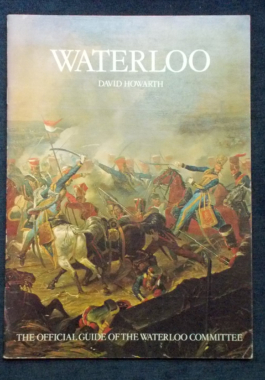 Believed to be the first guide to the battlefield written in English by an English writer, who is probably also the greatest living expert on Waterloo. There's descriptions of the battle location, weaponry and tactics that were all implement in a few hours on June 187, 1815. Illustrated.
Believed to be the first guide to the battlefield written in English by an English writer, who is probably also the greatest living expert on Waterloo. There's descriptions of the battle location, weaponry and tactics that were all implement in a few hours on June 187, 1815. Illustrated. -
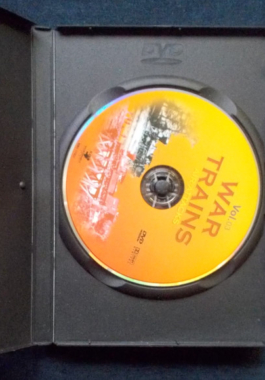
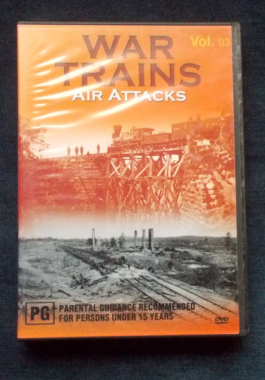 Volume 3 of the award winning series that covers the dynamic history of the railroads during warfare from the American Civil War to World Wars I and II, Korea and Vietnam. Whether under full attack or evacuating the wounded, the trains kept running.
Volume 3 of the award winning series that covers the dynamic history of the railroads during warfare from the American Civil War to World Wars I and II, Korea and Vietnam. Whether under full attack or evacuating the wounded, the trains kept running. -
 More and more Australians are reflecting on the soldiers who helped shape our nation. Many are choosing to make pilgrimages to the battlefields of our history, to bring to life names like the Somme, Passchendaele and Ypres. This is the essential companion for anyone visiting the Western Front, presenting well-illustrated walking tours across fourteen of the most important battlefields on easily accessible walking routes, it points out to readers the battlefield landmarks that still exist - the memorials to the men who fought there and the cemeteries where many of them still lie. There are moving quotes and black and white illustrations revealing the experiences of war from the common Aussie digger together with easy-to-follow- directions that allows anyone to visit the battlefields and walk in the footsteps of the first ANZACS.
More and more Australians are reflecting on the soldiers who helped shape our nation. Many are choosing to make pilgrimages to the battlefields of our history, to bring to life names like the Somme, Passchendaele and Ypres. This is the essential companion for anyone visiting the Western Front, presenting well-illustrated walking tours across fourteen of the most important battlefields on easily accessible walking routes, it points out to readers the battlefield landmarks that still exist - the memorials to the men who fought there and the cemeteries where many of them still lie. There are moving quotes and black and white illustrations revealing the experiences of war from the common Aussie digger together with easy-to-follow- directions that allows anyone to visit the battlefields and walk in the footsteps of the first ANZACS. -

Vietnam: Alan Watt
$15.00This Australian analysis was the fourth in a series of background books sponsored by the Australian Institute of International Affairs. This book dispassionately consider the much-discussed factual and legal consequences of the 1954 international agreements with an appraisal of the circumstances of Australian and American intervention as well as the arguments for and against involvement. -
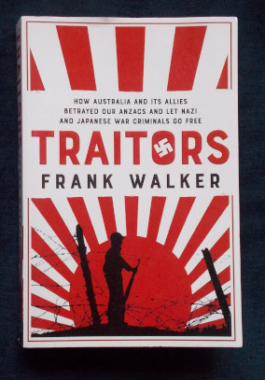
Traitors: Frank Walker
$20.00In October 1943 Winston Churchill, Franklin D. Roosevelt and Josef Stalin signed a solemn pact that once their enemies were defeated the Allied powers would 'pursue them to the uttermost ends of the earth and will deliver them to their accusers in order that justice may be done'. Nowhere did they say that justice would be selective. But it would prove to be just that. This book outlines the treachery of the British, American and Australian governments who turned a blind eye to those who experimented on Australian prisoners of war with details on how Nazis hired by ASIO were encouraged to settle in Australia and how the Catholic Church, CIA and MI6 helped the worst Nazi war criminals escape justice. While our soldiers were asked to risk their lives for King and country, Allied corporations traded with the enemy; Nazi and Japanese scientists were enticed to work for Australia, the US and UK; and Australia's own Hollywood hero Errol Flynn was associating with Nazi spies...What else did they hide? -
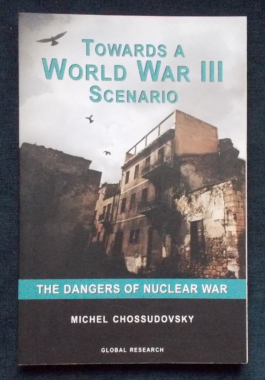 The author is a Professor of Economics and Director of the Centre for Research on Globalisation. This book has been rated and reviewed as a "...'must' resource - a richly documented and systematic diagnosis of the...planning of U.S. Wars since 9-11" "...one of the most important books currently available...the information is heart rending, scary and absolutely accurate." ...a hard-hitting and compelling book (which) explains why and how we must undertake a concerted...campaign to head off the impending cataclysmic demise of the human race and planet Earth."
The author is a Professor of Economics and Director of the Centre for Research on Globalisation. This book has been rated and reviewed as a "...'must' resource - a richly documented and systematic diagnosis of the...planning of U.S. Wars since 9-11" "...one of the most important books currently available...the information is heart rending, scary and absolutely accurate." ...a hard-hitting and compelling book (which) explains why and how we must undertake a concerted...campaign to head off the impending cataclysmic demise of the human race and planet Earth." -
 Who is Captain Sir Tom Moore? You've seen him on the television walking the length of his garden. A frail elderly man, doing his bit at a time of crisis. But he wasn't always like this. From a childhood in the foothills of the Yorkshire Dales, Tom Moore grew up in a loving family, which wasn't without its share of tragedy. It was a time of plenty and of want. When the storm clouds of the Second World War threatened, he raised his hand and like many of his generation, joined up to fight. His war would take him from a country he had never left to a place which would steal his heart, India and the Far East, to which he would return many years later to view the sight he had missed first time around: the distant peak of Everest. Captain Tom's story is our story. It is the story of our past hundred years here in Britain. It's a time which has seen so much change, yet when so much has stayed the same: the national spirit, the can-do attitude, the belief in doing your best for others. Illustrated with photographs.
Who is Captain Sir Tom Moore? You've seen him on the television walking the length of his garden. A frail elderly man, doing his bit at a time of crisis. But he wasn't always like this. From a childhood in the foothills of the Yorkshire Dales, Tom Moore grew up in a loving family, which wasn't without its share of tragedy. It was a time of plenty and of want. When the storm clouds of the Second World War threatened, he raised his hand and like many of his generation, joined up to fight. His war would take him from a country he had never left to a place which would steal his heart, India and the Far East, to which he would return many years later to view the sight he had missed first time around: the distant peak of Everest. Captain Tom's story is our story. It is the story of our past hundred years here in Britain. It's a time which has seen so much change, yet when so much has stayed the same: the national spirit, the can-do attitude, the belief in doing your best for others. Illustrated with photographs. -
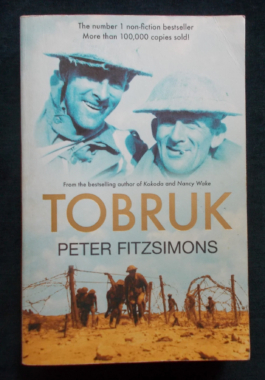
Tobruk: Peter Fitzsimons
$15.00In the dark heart of World War II, when Hitler turned his attentions to conquering North Africa, a distracted and far-flung Allied force could not give its all to the defence of the key city of Tobruk in Libya. So the job was left to the roughest, toughest bunch they could muster. Tobruk is the story of an incredible battle in excruciating desert heat through nine long months, against the might of Adolf Hitler's formidable Afrika Korps. This force's defence of Tobruk against the Afrika Korps' armoured division is one of the great battles of all time, yet rarely talked about. Drawing on extensive source material - including diaries and letters, some never published before - this extraordinary book is the definitive account of this remarkable battle. With black and white photographs. -
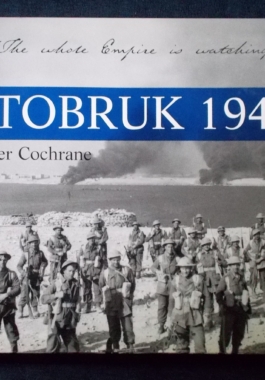
Tobruk 1941: Peter Cochrane
$15.00No surrender...no retreat. When the 9th Division of the AIF withdrew into the desert fortress town of Tobruk in April 1941, a siege began that would make its mark on the course of World War II and the popular memory of a nation. The siege was intended to last no longer than two months, but ultimately extended to eight. Under the command of Morshead, the Allied troops employed an aggressive, daring defence that put a sizeable dent ion Rommel's aura of invincibility. The defiant Aussie diggers distinguished themselves through their determination and unquenchable cheerful spirit. The success of the Rats of Tobruk inspired hope for the possibility of effective resistance in the midst of the darkest days of the war. Illustrated with archival black and white photographs. -

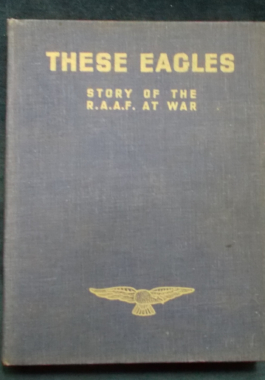 With stories, sketches and photographs from the servicemen and women of the Royal Australian Air Force. No 'Boys Own' adventures here - these are real tales of man's condition, actions and reactions in wartime. From Out Of Control: To watch Mother Earth rushing up to meet you while you are fighting a spine at a mere few thousand feet does not increase your expectation of a long and useful life... There's the ground crew blokes, the high-altitude men, the U-boat spotters, the Old New Contemptibles; the ladies of the W.A.A.A.F get a salute from the boys. There's even cartoons - such as one would expect from an Aussie view of things. Illustrated with sketches, black and white photographs and colour plates.
With stories, sketches and photographs from the servicemen and women of the Royal Australian Air Force. No 'Boys Own' adventures here - these are real tales of man's condition, actions and reactions in wartime. From Out Of Control: To watch Mother Earth rushing up to meet you while you are fighting a spine at a mere few thousand feet does not increase your expectation of a long and useful life... There's the ground crew blokes, the high-altitude men, the U-boat spotters, the Old New Contemptibles; the ladies of the W.A.A.A.F get a salute from the boys. There's even cartoons - such as one would expect from an Aussie view of things. Illustrated with sketches, black and white photographs and colour plates. -
 To many people the most glamorous of aeroplanes is the fighter, by the idea of men flying alone high above the earth in the open cockpit of First World War aircraft, as they fought the gaily-coloured Fokker, Albatross and Pfalz of the German Air Service. This 'feeling for the fighter' was strengthened in 1940 when the Hurricanes and Spitfires of the Royal Air Force saved Britain from German invasion. This book describes the fighters of both wars; there is also the entire development of the fighter from its primitive beginnings up to the supersonic age. The most significant fighters of Britain, France, Germany, Italy, the United States, Japan and the U.S.S.R. are among those featured. Illustrated with black and white photos.
To many people the most glamorous of aeroplanes is the fighter, by the idea of men flying alone high above the earth in the open cockpit of First World War aircraft, as they fought the gaily-coloured Fokker, Albatross and Pfalz of the German Air Service. This 'feeling for the fighter' was strengthened in 1940 when the Hurricanes and Spitfires of the Royal Air Force saved Britain from German invasion. This book describes the fighters of both wars; there is also the entire development of the fighter from its primitive beginnings up to the supersonic age. The most significant fighters of Britain, France, Germany, Italy, the United States, Japan and the U.S.S.R. are among those featured. Illustrated with black and white photos. -
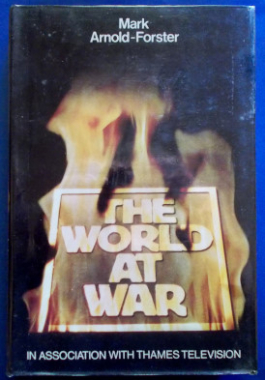
World War II, the most massive and appalling military conflagration in history began on September 1, 1939 when Hitler's troops invaded Poland and from there, it spread inexorably in all directions. On December 7 1941, the Japanese bombed Pearl Harbour, thus bringing the huge American armies into the picture and the Pacific was ablaze as Japan and America fought a devastating island-hopping war across the ocean. As well as swallowing millions of lives, the demands of the military machine gave rise to the atom bomb and the computer; the British Empire was dying but the Commonwealth was heralded; the war made Churchill and the 'spiv'; it created rationing and the Welfare State; it slaughtered 6,000,000 Jews, broke marriages and laid waste to the European economy. This is a graphic account of the fateful years that changed the world forever. Illustrated with black and white photos.
-
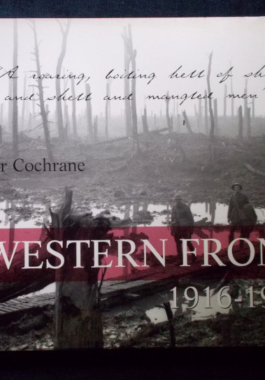 A fascinating, unsettling and unforgettable view of one of the most compelling events in modern history. For all the significance attached to the doomed heroism at Gallipoli, the Western Front was the single greatest wartime tragedy that elicited the greatest sacrifice. Of the 61,720 who died in the course of the war, 46,319 were lost at the Western Front. In a matter of weeks, more Australians were slain in or or two battles than in the entire eight months at Gallipoli. Those terrible years, 1916 to 1918, represent the whole panoply of modern warfare. This is an examination of the record of official and unofficial images in unexpected ways. It looks at the major battles of the campaign, the grim conditions endured by the soldiers, the workers of the massive support system, the valiant efforts of stretcher-bearers and medical workers and, finally, the run of victories under Monash in which Australian soldiers distinguished themselves above and beyond their numerical presence. Illustrated with black and white photographs.
A fascinating, unsettling and unforgettable view of one of the most compelling events in modern history. For all the significance attached to the doomed heroism at Gallipoli, the Western Front was the single greatest wartime tragedy that elicited the greatest sacrifice. Of the 61,720 who died in the course of the war, 46,319 were lost at the Western Front. In a matter of weeks, more Australians were slain in or or two battles than in the entire eight months at Gallipoli. Those terrible years, 1916 to 1918, represent the whole panoply of modern warfare. This is an examination of the record of official and unofficial images in unexpected ways. It looks at the major battles of the campaign, the grim conditions endured by the soldiers, the workers of the massive support system, the valiant efforts of stretcher-bearers and medical workers and, finally, the run of victories under Monash in which Australian soldiers distinguished themselves above and beyond their numerical presence. Illustrated with black and white photographs. -
 What possessed the German people to embrace Hitler and his politics of mass murder? The author, an eminent historian, points to Goebbels' brilliant manipulation of the mass murderer as the key to the Fuhrer's success. Goebbels' diabolical propaganda machine exploited all communication: radio, posters, magazines, documentaries, brochures and spectacular films in the drive to capture the minds of millions. By the use of patriotic myth and tradition, a nation fell under a mass hypnosis on a scale never before paralleled. Illustrated with black and white photos.
What possessed the German people to embrace Hitler and his politics of mass murder? The author, an eminent historian, points to Goebbels' brilliant manipulation of the mass murderer as the key to the Fuhrer's success. Goebbels' diabolical propaganda machine exploited all communication: radio, posters, magazines, documentaries, brochures and spectacular films in the drive to capture the minds of millions. By the use of patriotic myth and tradition, a nation fell under a mass hypnosis on a scale never before paralleled. Illustrated with black and white photos. -
 The Von Bock memoirs allow the reader to see the entire drama of the Second World War through the eyes of one of Germany's most important military commanders. After the attacks on Poland and Western Europe, campaigns that he helped bring to a successful conclusion, Von Bock became Commander-in-Chief of Army Group Center which carried out the main drive on Moscow during Operation Barbarossa and brought the Red Army to the verge of collapse. Hitler relieved Von Bock when the German offensive bogged down during the winter of 1941/1942. After he returned as Commander-in-Chief of Army Group South, Von Bock was eventually placed in temporary 'retirement' when he critised Hitler's division of forces against Stalingrad and the Caucasus - and the road to catastrophe began. Army commanders like Hoth, Guderian, Kluge and Paulus served under Von Bock, while at his side was his nephew Henning von Tresckow, who led the most active resistance movement against Hitler, and Carl-Hans von Hardenberg, a friend and advisor of Von Stauffenberg. Their efforts to win him over to the resistance failed, yet Von Bock the pronounced resistance sentiments among his staff, and even became privy to the attempted assassination of Hitler on July 20, 1944. This book allows us to reassess Fedor Von Bock, whose complex personality is revealed by his diary entries.
The Von Bock memoirs allow the reader to see the entire drama of the Second World War through the eyes of one of Germany's most important military commanders. After the attacks on Poland and Western Europe, campaigns that he helped bring to a successful conclusion, Von Bock became Commander-in-Chief of Army Group Center which carried out the main drive on Moscow during Operation Barbarossa and brought the Red Army to the verge of collapse. Hitler relieved Von Bock when the German offensive bogged down during the winter of 1941/1942. After he returned as Commander-in-Chief of Army Group South, Von Bock was eventually placed in temporary 'retirement' when he critised Hitler's division of forces against Stalingrad and the Caucasus - and the road to catastrophe began. Army commanders like Hoth, Guderian, Kluge and Paulus served under Von Bock, while at his side was his nephew Henning von Tresckow, who led the most active resistance movement against Hitler, and Carl-Hans von Hardenberg, a friend and advisor of Von Stauffenberg. Their efforts to win him over to the resistance failed, yet Von Bock the pronounced resistance sentiments among his staff, and even became privy to the attempted assassination of Hitler on July 20, 1944. This book allows us to reassess Fedor Von Bock, whose complex personality is revealed by his diary entries. -
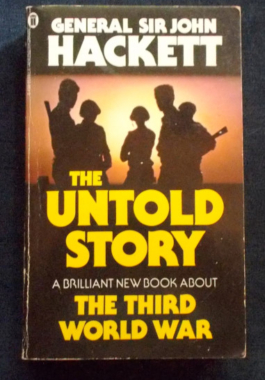 Hackett's first book, The Third World War: August 1985 sold 3,000,000 copies world wide and received great critical acclaim. This new book tells the rest of the story, using much new material, including declassified NATO reports and many hitherto unexplored episodes. It gives the inside story of how the war was planned in Moscow and experienced on the battlefield by the Warsaw Pact forces. Hackett re-examines his hypothetical scenario for World War III, incorporating the technological advances made in the four years since the publication of his first book.
Hackett's first book, The Third World War: August 1985 sold 3,000,000 copies world wide and received great critical acclaim. This new book tells the rest of the story, using much new material, including declassified NATO reports and many hitherto unexplored episodes. It gives the inside story of how the war was planned in Moscow and experienced on the battlefield by the Warsaw Pact forces. Hackett re-examines his hypothetical scenario for World War III, incorporating the technological advances made in the four years since the publication of his first book. -
 In many ways, the Digger is a study in contradictions: he doesn't crave war, yet he will fight with unequalled ferocity; he hates spit and polish but will hold his discipline under the most trying conditions; he is tough, yet compassionate; he hates his enemy until he surrenders, then is generous in victory; he despises histrionics but will cry unashamedly at the loss of a mate...The Digger is a key piece of the complex jigsaw puzzler that makes up 'The Australian' - but who is the Digger, exacatly? What elements have gone into forging his spirit?They have won acclaim for their fighting prowess and bravery, while retaining their larrikin spirit, their compassion and their strong sense of mateship. Those who fought in the trenches of Gallipoli, the Somme and Ypres have an immediate kinship with those who followed in NorthAfrica and New Guinea; then later in Korea, Vietnam, East Timor, Iran and Iraq. Australians can be proud of the heritage our Diggers have bequeathed to us. Illustrated with black and white photos.
In many ways, the Digger is a study in contradictions: he doesn't crave war, yet he will fight with unequalled ferocity; he hates spit and polish but will hold his discipline under the most trying conditions; he is tough, yet compassionate; he hates his enemy until he surrenders, then is generous in victory; he despises histrionics but will cry unashamedly at the loss of a mate...The Digger is a key piece of the complex jigsaw puzzler that makes up 'The Australian' - but who is the Digger, exacatly? What elements have gone into forging his spirit?They have won acclaim for their fighting prowess and bravery, while retaining their larrikin spirit, their compassion and their strong sense of mateship. Those who fought in the trenches of Gallipoli, the Somme and Ypres have an immediate kinship with those who followed in NorthAfrica and New Guinea; then later in Korea, Vietnam, East Timor, Iran and Iraq. Australians can be proud of the heritage our Diggers have bequeathed to us. Illustrated with black and white photos. -
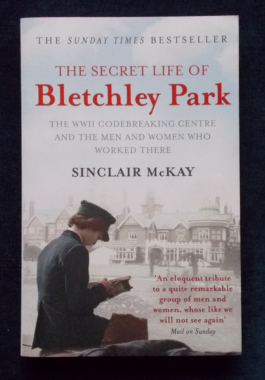 Bletchley Park was where one of Word War II's most famous and crucial achievements was made: the cracking of Germany's Enigma code in which its most important military communications were couched. This country house was home to Britain's most brilliant mathematical brains - including Alan Turing - and the scene of immense advances in technology...indeed, the birth of modern computing. The military codes deciphered there were instrumental in turning both the Battle of the Atlantic and the war in North Africa. Plenty has been written about the scientists and the code-breaking, in both fact and fiction, from Robert Harris and Ian McEwan to Andrew Hodges' biography of Turing. But what of the thousands of men and women who lived and worked there during World War II? This is not only a history of life at Bletchley Park; this is also an amazing compendium of memories from people now in their eighties of skating on the frozen lake in the grounds and the high jinks at nearby accommodation hostels - and of the implacable secrecy that meant girlfriend and boyfriend working in adjacent huts knew nothing about each other's work. Illustrated with black and white photographs.
Bletchley Park was where one of Word War II's most famous and crucial achievements was made: the cracking of Germany's Enigma code in which its most important military communications were couched. This country house was home to Britain's most brilliant mathematical brains - including Alan Turing - and the scene of immense advances in technology...indeed, the birth of modern computing. The military codes deciphered there were instrumental in turning both the Battle of the Atlantic and the war in North Africa. Plenty has been written about the scientists and the code-breaking, in both fact and fiction, from Robert Harris and Ian McEwan to Andrew Hodges' biography of Turing. But what of the thousands of men and women who lived and worked there during World War II? This is not only a history of life at Bletchley Park; this is also an amazing compendium of memories from people now in their eighties of skating on the frozen lake in the grounds and the high jinks at nearby accommodation hostels - and of the implacable secrecy that meant girlfriend and boyfriend working in adjacent huts knew nothing about each other's work. Illustrated with black and white photographs. -
 World War II gave rise to an astonishing number of unorthodox 'special forces' yet this is the first book to assess their contribution to the final victory or how they related to one another and to the more conventional fighting forces. In 1939 'Special Forces' did not exist; it was Churchill who ordered them to 'set Europe ablaze'. Operating under the cloak of secrecy during wartime and quickly disbanding after it they have not often received credit for their achievements. From early 'butcher and bolt' raids by parachutists and commandos to SOE activities in the Balkans and France; 'Merrill's Marauders' and Windgate's Chindits in Burma, Special Forces were active in all great theatres of war. They played a vital role in intelligence-gathering, Anglo-American co-operation, sabotage, the fostering of local resistance movements and guerilla fighting. They denied 'heavy water' to Germany, making it impossible for that country to manufacture an atomic bomb and crucially affected the balance of air power in the Western Desert in 1942. Here are survivors' stories - courageous men and women, many of whom have become legendary. With black and white photographs.
World War II gave rise to an astonishing number of unorthodox 'special forces' yet this is the first book to assess their contribution to the final victory or how they related to one another and to the more conventional fighting forces. In 1939 'Special Forces' did not exist; it was Churchill who ordered them to 'set Europe ablaze'. Operating under the cloak of secrecy during wartime and quickly disbanding after it they have not often received credit for their achievements. From early 'butcher and bolt' raids by parachutists and commandos to SOE activities in the Balkans and France; 'Merrill's Marauders' and Windgate's Chindits in Burma, Special Forces were active in all great theatres of war. They played a vital role in intelligence-gathering, Anglo-American co-operation, sabotage, the fostering of local resistance movements and guerilla fighting. They denied 'heavy water' to Germany, making it impossible for that country to manufacture an atomic bomb and crucially affected the balance of air power in the Western Desert in 1942. Here are survivors' stories - courageous men and women, many of whom have become legendary. With black and white photographs.





